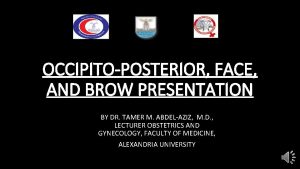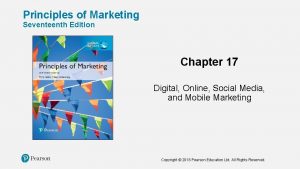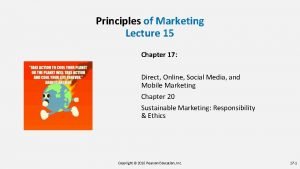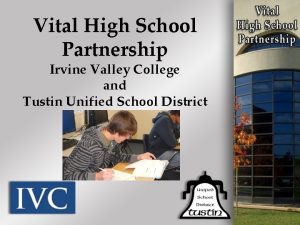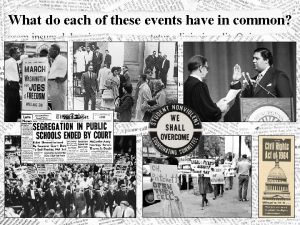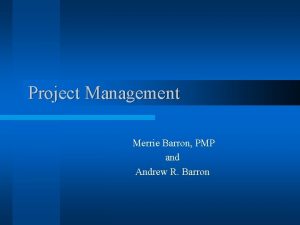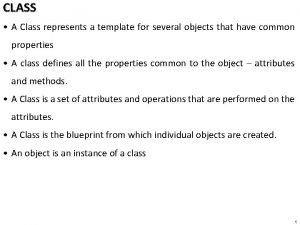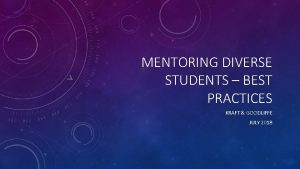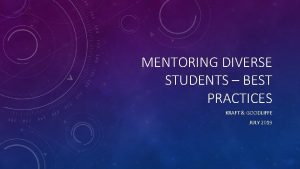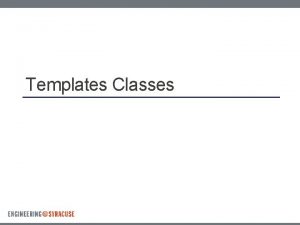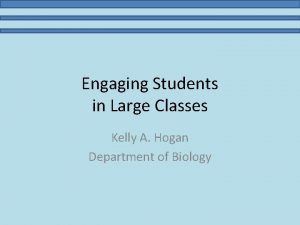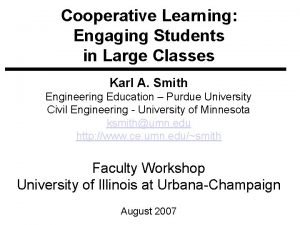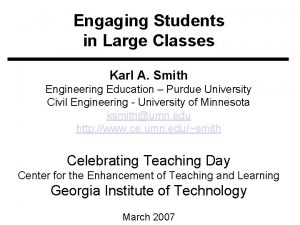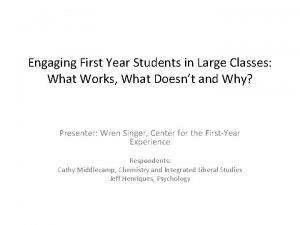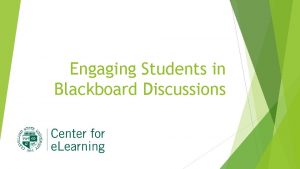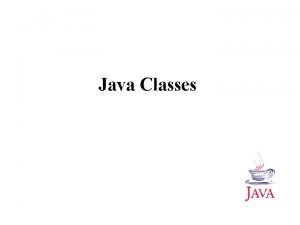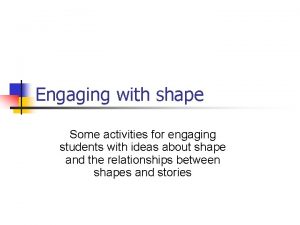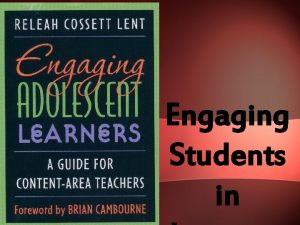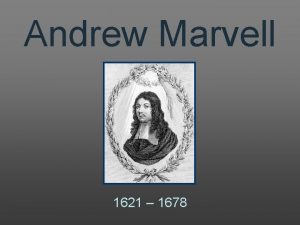Engaging Students in Large Classes Andrew Goodliffe and

















- Slides: 17

Engaging Students in Large Classes Andrew Goodliffe and Josh Galster July 2019

Interactive lectures: Classes in which the instructor breaks the lecture at least once per class to have students participate in an activity that lets them work directly with the material.

Setting the stage • What is large? • Do you have teaching assistants? http: //finance. fortune. cnn. com • Do you have a classroom management system (e. g. Blackboard)? • Identify your teaching style – Informer, Questioner, Entertainer, etc. • Play off your style and strengths, but incorporate other deliveries to promote engagement.

How do you prepare for big lectures? • Identify your main points • How do slides advance these points • Prepare your visuals • Print out notes • Practice! • Focus on your slide transitions • Don’t install new software right beforehand! • Adapt as needed • Take notes on how you would improve for next year • Use a lecture preparation checklist

Preparing the teaching team Detail your expectations in writing • Explain TA duties • Team work • Records policy • If co-teaching make sure each professor has clear responsibilities

Goals for the course: Define for yourself and students • What is the purpose of the course? • Develop an informative syllabus (set the expectations early) • State goals • Explicitly express policies and procedures for grading, attendance, late homework, missed tests, office hours, email, etc. - make all expectations clear • Publish all important dates at the beginning of the class • Identify all resources that will be used and have them ready • Do not make up rules as you go along!

Activity • Identify a large class that you might teach (see worksheet in notebook 2 -15) • What are your top 5 goals for what students will learn in this class? How will you assess them?

Delivering the Lecture EXPRESSIVENESS is the most basic and most direct way to keep students’ interest

Engagement Triggers - examples • Interpreting Graphs • Making Calculations • Demonstration/making predictions • Brainstorming • Reading to solve a problem • Physical prop • Evocative visual/picture • Cartoons • News Clips & Articles • • • Video clips Think-Pair-Share Minute paper Muddiest Point Concep. Tests Question of the Day Small group discussion Clicker Google Earth (or other tech) http: //serc. carleton. edu/NAGTWorkshops/e arlycareer/teaching/Large. Classes. html

An Example of In-Class Activity In a 10 -20 minute breakout…… • Break into groups of 5 -10 (works even in auditorium seating) and provide a single question, set of questions, or exercise that students need to discuss. • The question(s) can be used as an introduction or as an assessment of presented material. Each group independently discusses the question and negotiates a group answer. • Example of hurricane evacuation: stay or go? You and the TAs monitor and guide groups. Collect each group’s answer (a singular assignment with everyone's name listed).

Kinesthetic Learning Example – Pand S-Waves From: Mussett and Khan, Looking into the earth Differences in particle motion between a P- and S-wave.

Personal response systems • Clickers • Most have smartphones • Top Hat • Poll Everywhere • Others • Use of these by instructors is highly personal.

Interactive Lectures Activity Spend the next few minutes on an activity that you’d like to use in your class (see worksheet, page 2 -16). • What concept do you want students to better understand? • How will you engage the students? • How will you know it is working?

Interactive Lectures Group Brainstorm and Sharing Now share your idea with a partner and provide each other with feedback.

Engaging non-majors Many large lecture classes serve as a core requirement and have many non-majors who are not necessarily engaged in the topic. This is your opportunity to get them interested and excited in geoscience. • Make it relevant to their lives • Make pop culture work for you • Engage different learning styles • Bring in your personal experiences

Bring your personal experiences to the classroom • • • Where have you done fieldwork? What inspires you? What environmental issues keep you up at night? Where have you traveled? What is the societal relevance of your work? What career path did you follow and what experiences shaped that?

Assessment that is consistent with your engagement style… In "large" classes, you can use a variety of techniques, depending upon the # of students and how much TA support you have: • • Multiple choice/ scantron Online quizzes/tests (group or individual) Short answer / short essay Fill in the blank Matching (vocabulary) Clickers Fill in the blank diagrams Peer review Use Bloom's Taxonomy - aim for students to be working at the "top" of the pyramid in class, and in your exams Consider collaborative exams!
 Presenting diameter in occipito posterior
Presenting diameter in occipito posterior Engaging dynamics
Engaging dynamics Marketing involve engaging directly with carefully targeted
Marketing involve engaging directly with carefully targeted Marketing involve engaging directly with carefully targeted
Marketing involve engaging directly with carefully targeted E classe e subclasse
E classe e subclasse Pre ap classes vs regular classes
Pre ap classes vs regular classes Ivc summer classes for high school students
Ivc summer classes for high school students Champion of filipino students
Champion of filipino students What was the purpose of the sibley commission
What was the purpose of the sibley commission Ross mcdermott and andrew owen travel
Ross mcdermott and andrew owen travel Andrew carnegie and john d. rockefeller venn diagram
Andrew carnegie and john d. rockefeller venn diagram Project management by merrie barron and andrew barron
Project management by merrie barron and andrew barron Introduction of john donne
Introduction of john donne Andrew and ashton walker
Andrew and ashton walker The life and legacy of andrew jackson
The life and legacy of andrew jackson Andrew jackson and his supporters believed in apex
Andrew jackson and his supporters believed in apex Pattern and pattern classes in image processing
Pattern and pattern classes in image processing Difference between abstract classes and interfaces
Difference between abstract classes and interfaces
